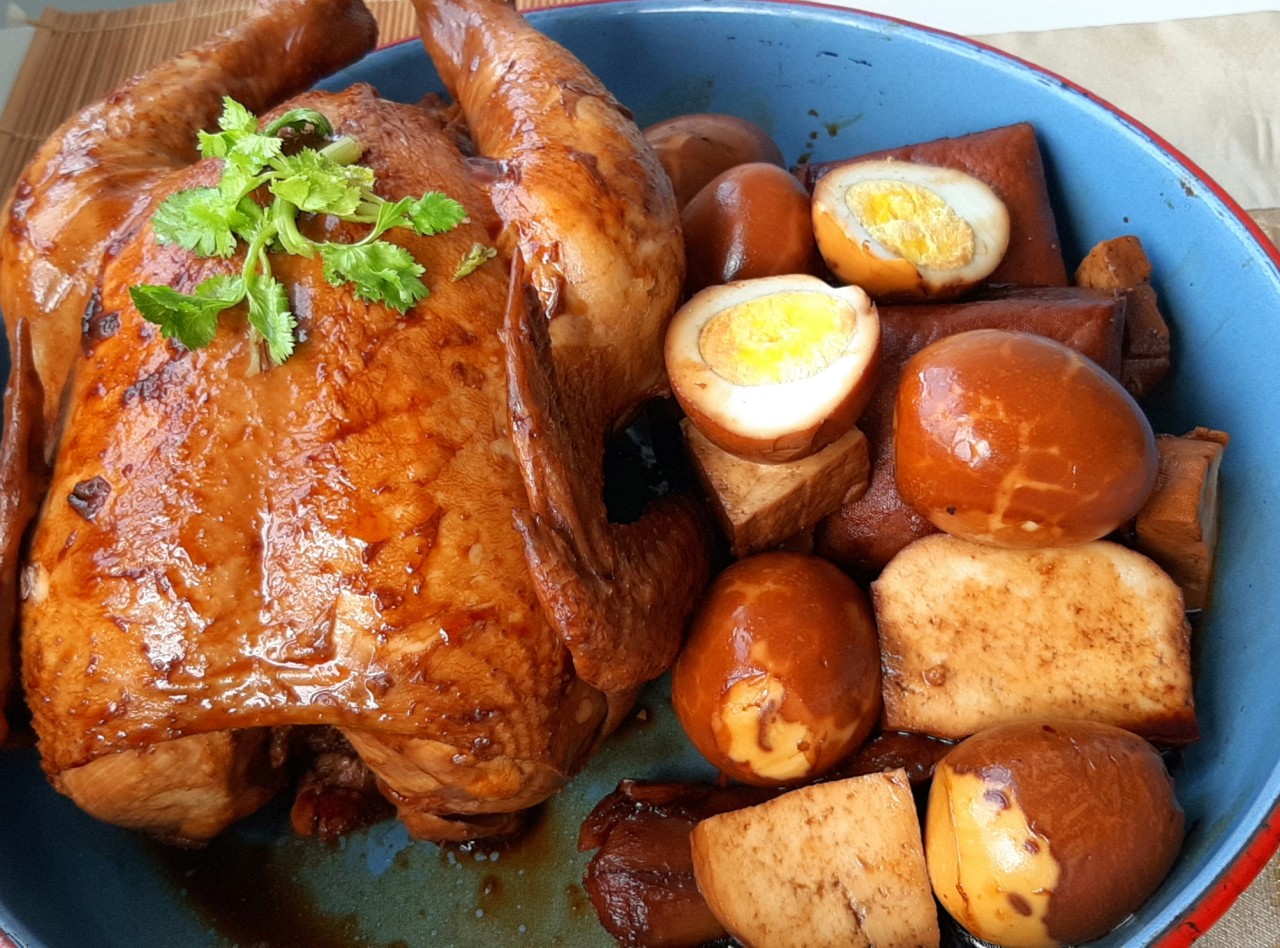 BRAISED chicken is a Cantonese classic served in restaurants in Chinatowns dotting the global dining scene. This Michelin-starred dish stars succulent chicken with satin-smooth skin from gentle poaching in an aromatic soy sauce bath. In Chinese cuisine, chicken is a harbinger for prosperity – this dish was typically served during auspicious festive occasions like Lunar New Year and birthday celebrations. It was food blogger Tony’s go-to recipe during his student days in Canada in the ’80s learned from his Hong Kong school mates.
BRAISED chicken is a Cantonese classic served in restaurants in Chinatowns dotting the global dining scene. This Michelin-starred dish stars succulent chicken with satin-smooth skin from gentle poaching in an aromatic soy sauce bath. In Chinese cuisine, chicken is a harbinger for prosperity – this dish was typically served during auspicious festive occasions like Lunar New Year and birthday celebrations. It was food blogger Tony’s go-to recipe during his student days in Canada in the ’80s learned from his Hong Kong school mates.
Total Time: 1 hour
Difficulty: 1/5
Cost: $13.00
Serves: 5-6 persons
A: Chicken
1-1.4kg fresh chicken
B: Aromatics
1 tablespoon oil
5 star anise
½ teaspoon cloves
2 cinnamon sticks
½ tablespoon white peppercorns
9 cloves garlic, peeled
3 knobs ginger, peeled and bruised
C: Braising Liquid
1 cup dark soy sauce
½ cup light soy sauce
1 tablespoon black vinegar
1 tablespoon sesame oil
1 tablespoon Chinese cooking wine
1.2 litres water
8 tablespoons brown sugar
D: Optional Sides
4 firm tofu squares
10 eggs, hard boiled and peeled
E: Garnish
1 cucumber, sliced
1-2 stalks Chinese coriander
DIRECTIONS:
1. Heat up a large pot. Sauté B ingredients in oil until their aroma is released, about 5 minutes.
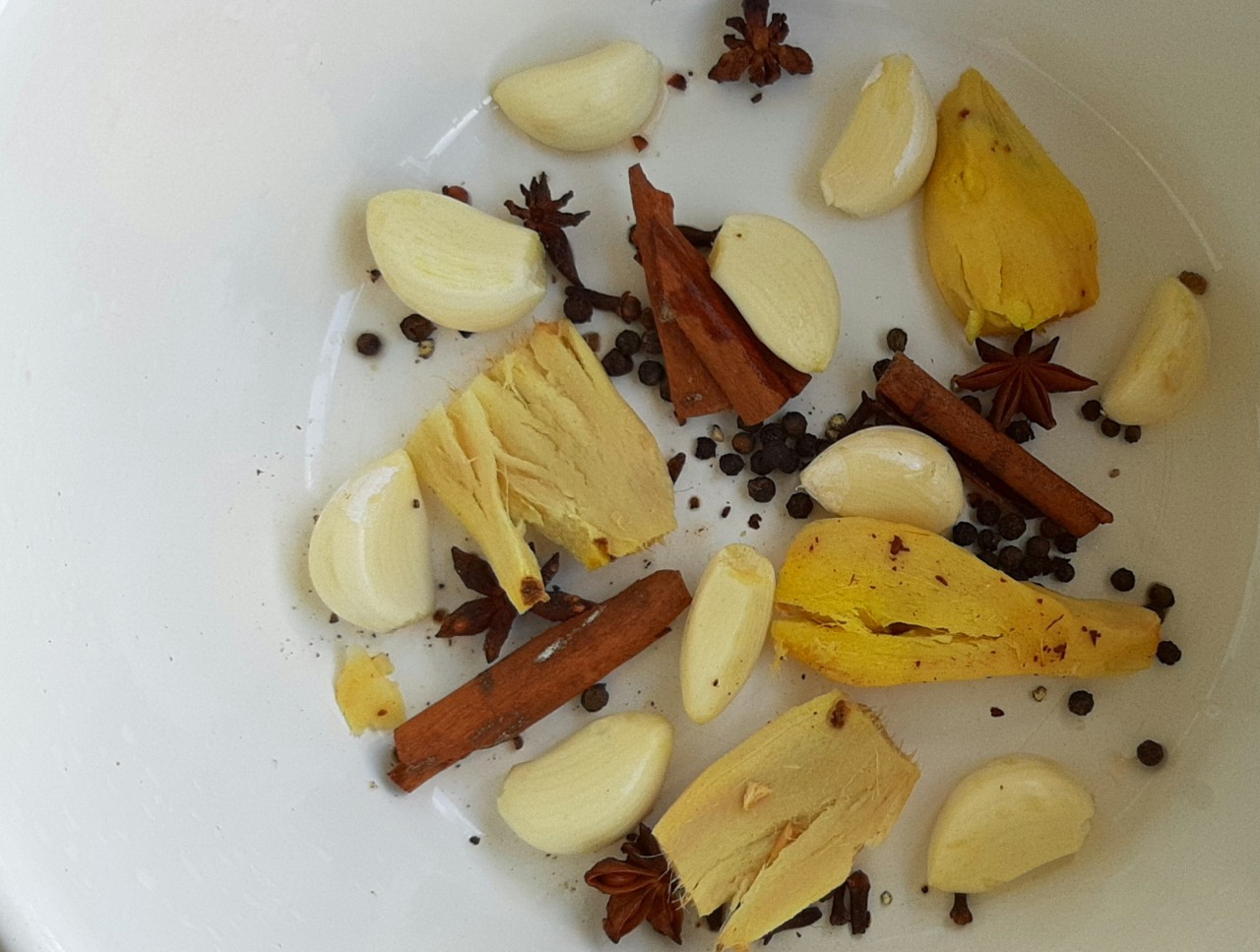
2. Pour in braising liquid. Bring it to a boil. Add brown sugar.
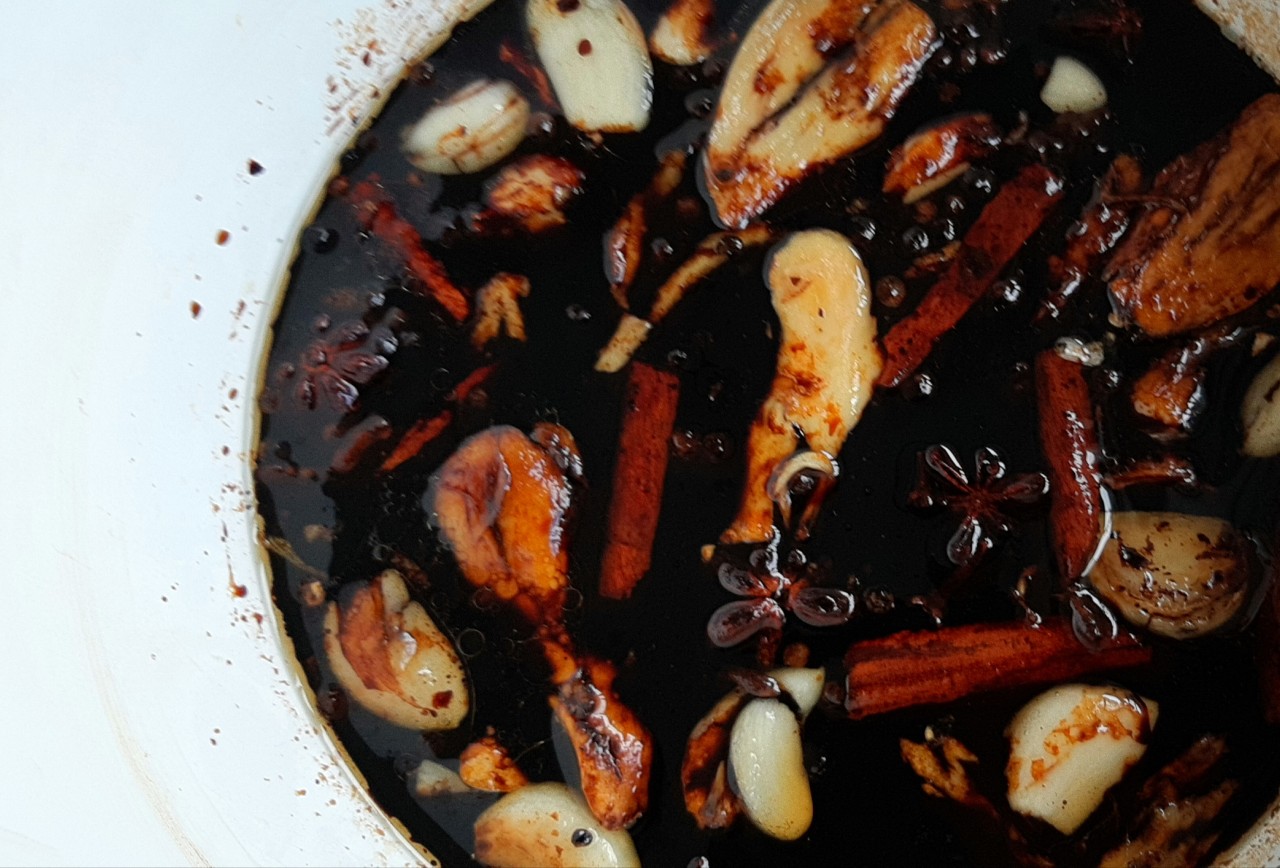
3. Add a dash of pepper for a subtle spiciness, if preferred.
4. Bring stock to a boil. Do a taste test, adjusting soy sauce or brown sugar for the desired balance of savoury and sweet notes. Bring it to a rolling boil over high heat.
5. Gently place chicken, breast facing down, into the pot, keeping it at high heat. Bring stock back to a boil, bubbling and churning.
6. Flip chicken over with its breast facing up. The cavity should be fully flooded – the leg joint at the hip should be submerged in stock. Top up with boiling water, if necessary, but make sure to keep chicken breast above the water line if a juicy and slightly pink breast meat is preferred.
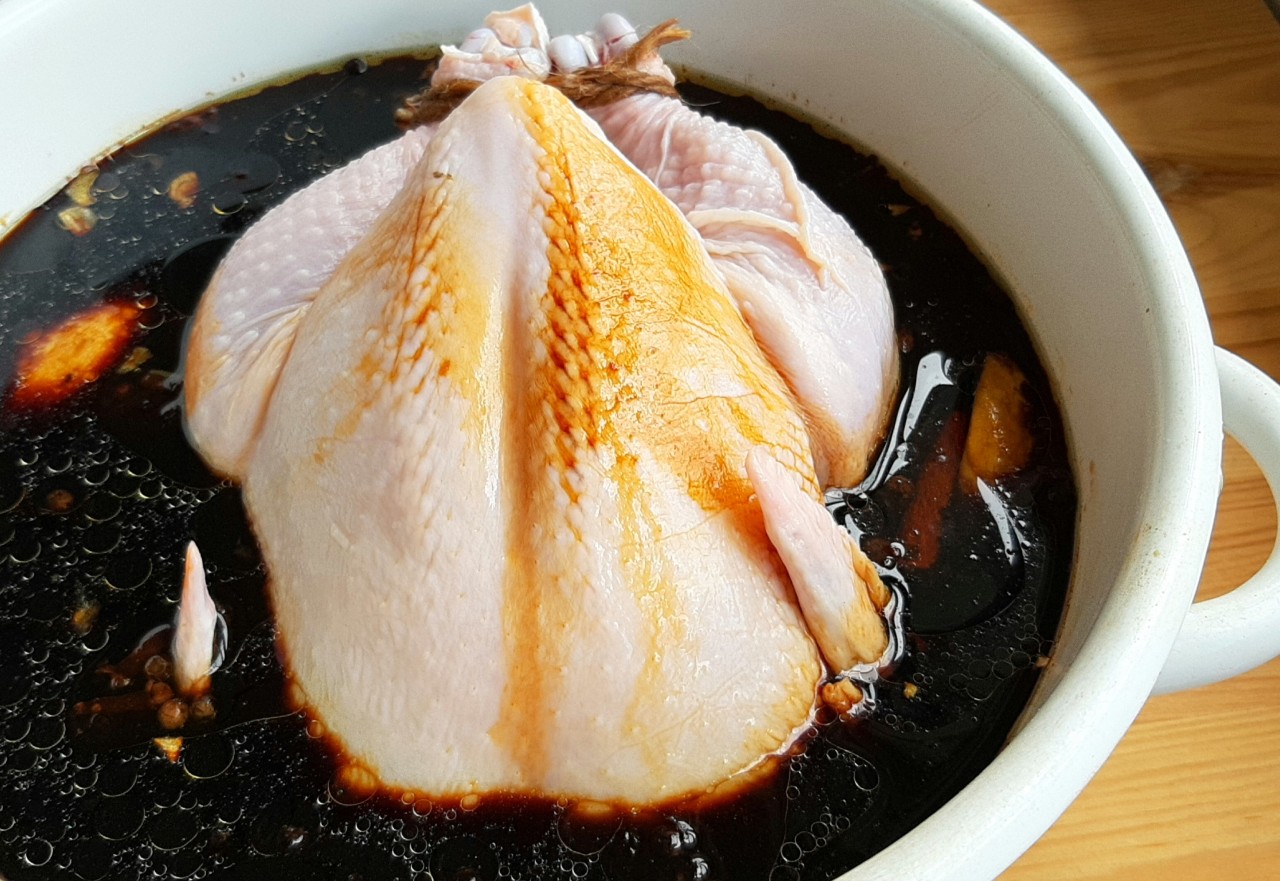
Alternatively, submerge whole bird totally in the stock for meat that is cooked right through.
7. When stock is boiling steadily, turn heat off completely. Add in tofu and eggs. Cover pot with a good fitting lid.
8. Let chicken poach gently for 30-40 minutes in residual heat in the stock.
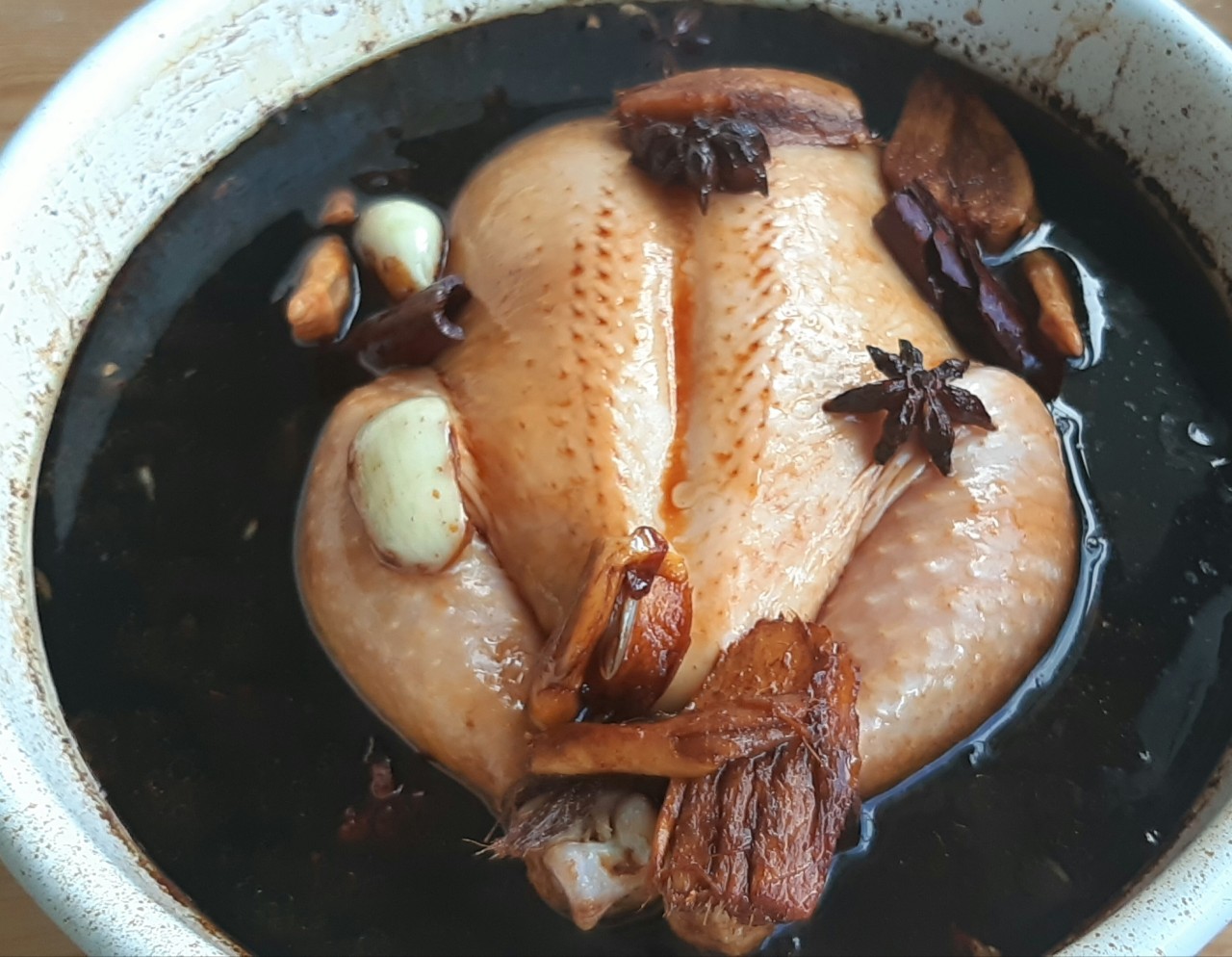 9. After 30-40 minutes, remove chicken from stock pot. The skin would have taken on a brown shade. Let it rest for 10 minutes until it is cool enough to handle and chop up.
9. After 30-40 minutes, remove chicken from stock pot. The skin would have taken on a brown shade. Let it rest for 10 minutes until it is cool enough to handle and chop up.
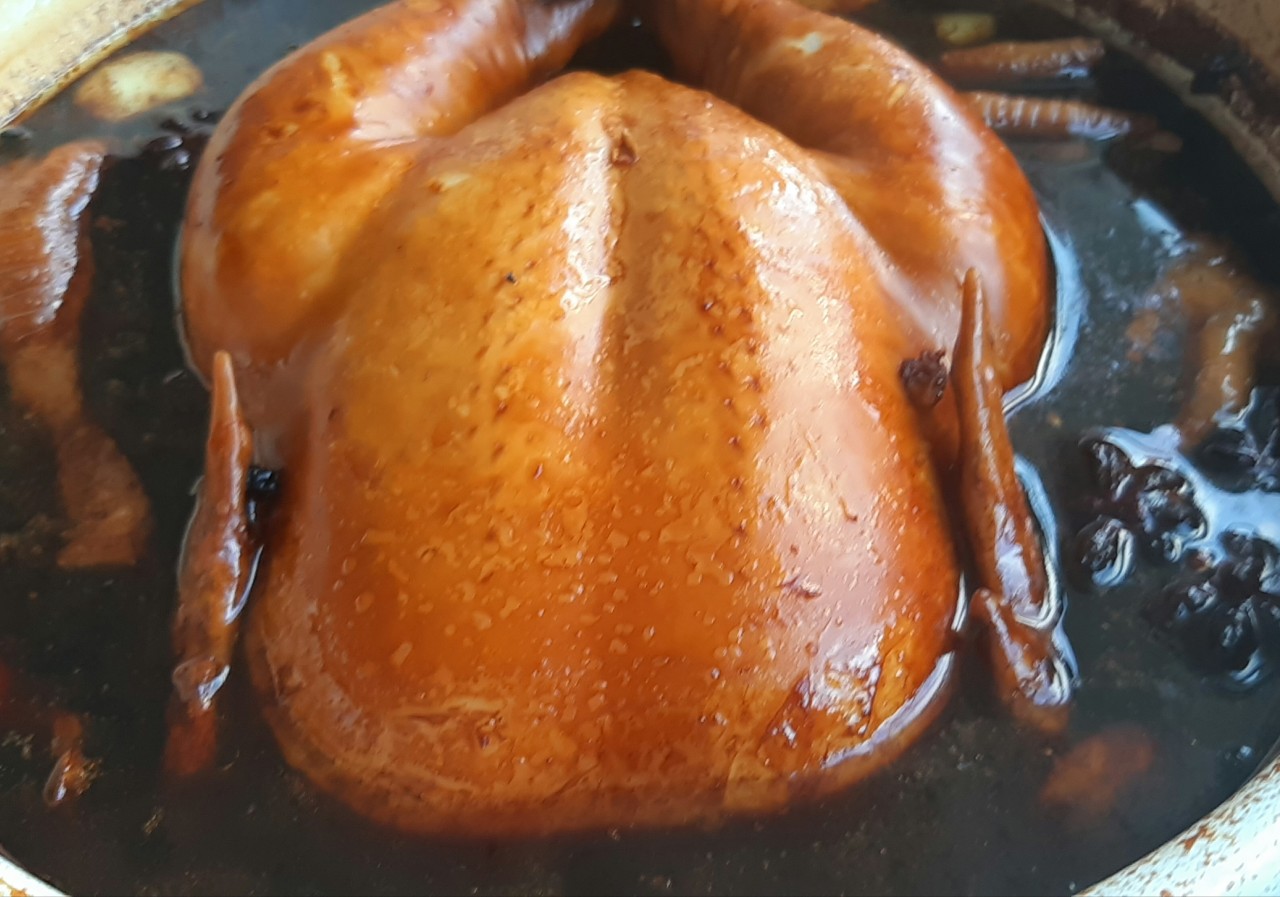 10. Using a cleaver, chop and serve chicken with tofu and eggs. Garnish with cucumber and coriander. Alternatively, serve chicken whole – simply rip it apart with your fingers, the best tool ever.
10. Using a cleaver, chop and serve chicken with tofu and eggs. Garnish with cucumber and coriander. Alternatively, serve chicken whole – simply rip it apart with your fingers, the best tool ever.
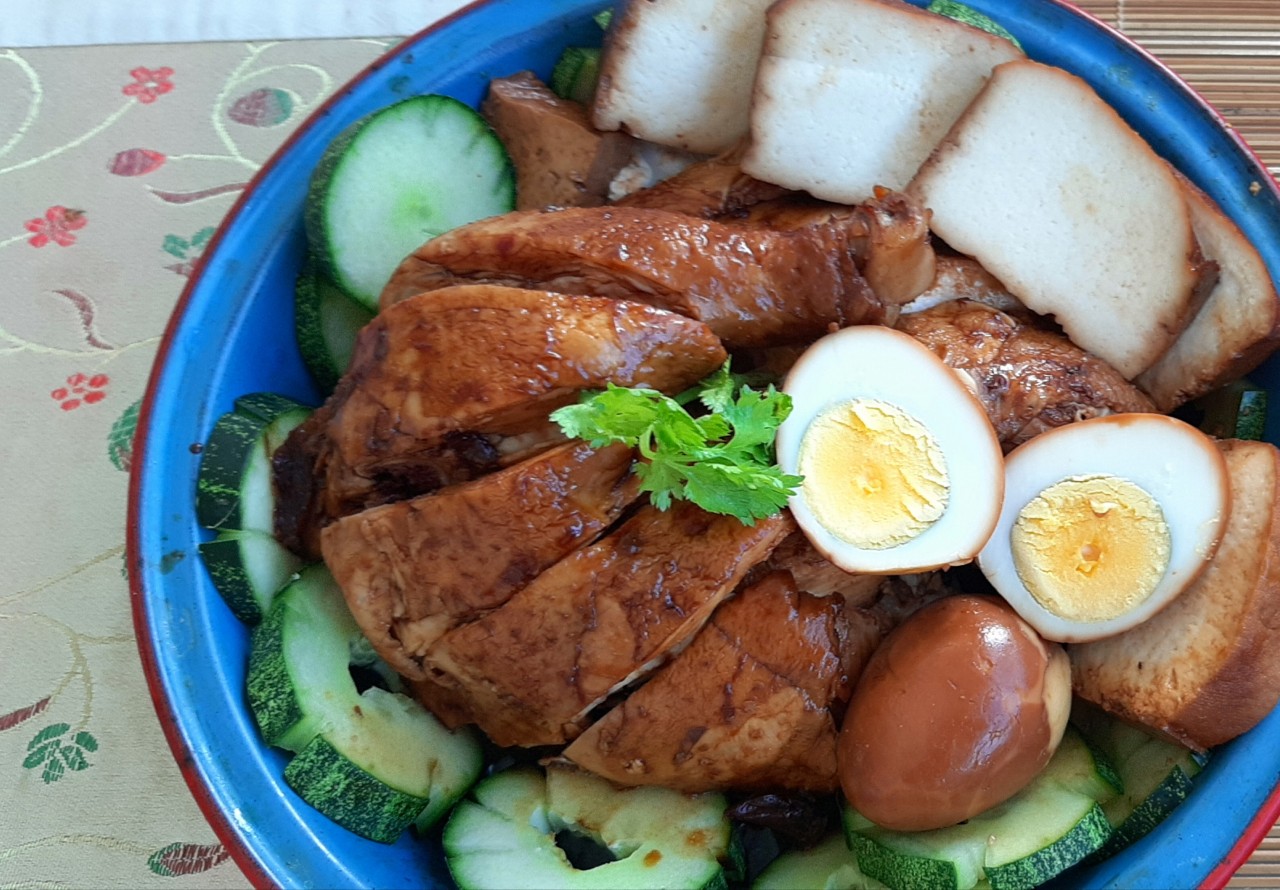
11. When stock has cooled, discard aromatics. Then freeze it; it can be re-used many times simply by topping up with water, sauces and spices as desired. Old stock like good old wine tastes better with age!
TIPS: For succulent meat, go for fresh chicken; opt for a small bird, approximately 1-1.5kg as the flavours will penetrate better. For the Chinese, wholeness symbolises unity which is particularly important during Lunar New Year. Hence, the Chinese observe the traditional practice of using a whole chicken. However for those who are practical, they can buy chicken parts such as chicken leg, wings or chopped up chicken. For onsen eggs where the yolk is slightly runny, parboil for 6 minutes whereas cook 10-12 minutes for fully set yolks.
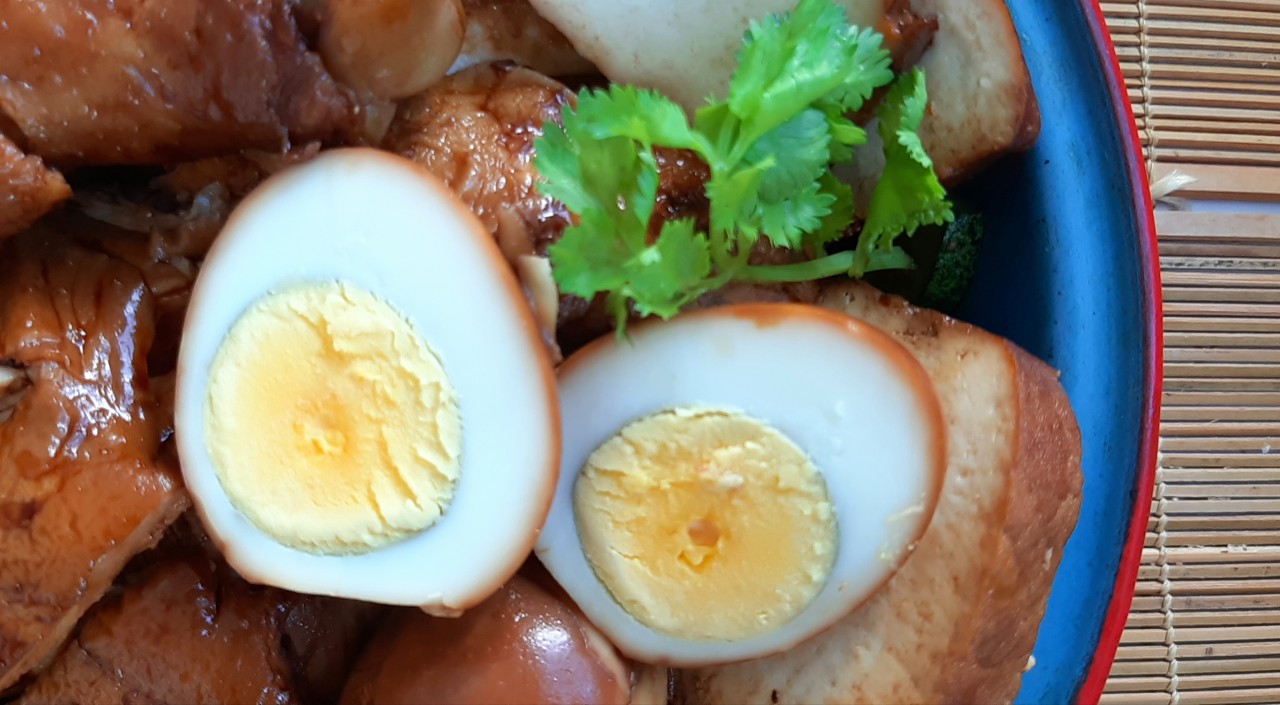
TECHNIQUE: Poaching 30 minutes yields slightly pink meat, especially at the leg joint. For well-cooked through meat, poach a total of 40-45 minutes. Poaching time varies according to amount of stock used, and how well the cooking pot is able to retain heat. Hence, adjust cooking time according to your preference.
Photos: Evonne Lyn Lee
Click on STORM-Asia/food for more recipes and reviews of restaurants.
If you have a simple recipe to share, please email it whipitup@storm.sg.
You may like to try these recipes:
Rainbow Yusheng With Passionfruit Dressing



















